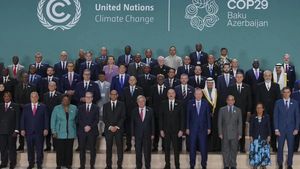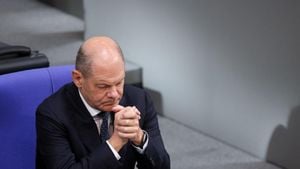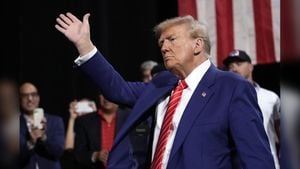The Russia-Ukraine conflict has taken on alarming new dimensions, with drone strikes becoming the defining feature of this intensified phase. Recent events have seen Ukrainian forces launch significant aerial attacks on Russian territory, particularly targeting Moscow, showcasing Ukraine's determination to push back against its much larger adversary. The latest offensive, which reportedly involved several Ukrainian drones reaching deep within Russia’s borders, marks one of the boldest military maneuvers by Ukraine.
After these Ukrainian attacks, Russia retaliated with unprecedented aggression, deploying around 145 drones over Kyiv. This massive response highlights the dangerous tit-for-tat nature of the current hostilities, where both sides seem intent on demonstrating military might. The airspace over both Ukraine and Russia is now being filled with drones and missiles, marking this new chapter in their clash.
Ukrainian President Volodymyr Zelenskyy is seen as having made this move not only to demonstrate military capability but also as part of a larger strategic message directed at international allies, especially as political winds shift with Donald Trump’s return to prominence. Analysts believe Zelenskyy’s timing is pivotal, especially as Trump’s potential policies could drastically reshape U.S. involvement and support for Ukraine.
The undercurrents of shifting U.S. policies add significant weight to Zelenskyy's recent decisions. Trump's administration may advocate for reduced military assistance to Ukraine, so these drone strikes could signal Ukraine's urgency to remind allies—particularly Washington—of the continued risks posed by Russia. Zelenskyy is likely concerned about potential negotiations between Trump and Russian President Vladimir Putin, which could jeopardize Ukraine's standing and ability to defend itself if those discussions lead to unfavorable outcomes.
This volatility poses unique challenges to Zelenskyy. With the Kamala Harris administration continuing the prior administration's moderate approach, the uncertainty around Trump raises alarms about future U.S. support. Although Trump has expressed interest in ending the war, the lack of clear commitments leaves Ukraine at the mercy of unpredictable geopolitics.
Zelenskyy’s provocative military actions with drones are also interpreted as messages to both allies and adversaries. By carrying out these strikes, Ukraine appears to be reaffirming its capacity for defense and readiness to engage militarily, hoping to secure continued international backing. Yet this boldness also risks pushing the conflict to even more perilous heights, where the stakes could rise dramatically.
These drone operations also come at a time when air raid alerts have sounded throughout Ukraine, with Kyiv’s mayor Vitali Klitschko urging residents to seek shelter amid the attacks. Local media reported explosions and increasing risks associated with the confrontations as each side ramps up its aerial capabilities.
The battles are not limited to Kyiv but extend throughout the region, with early November 2024 witnessing Israel intervening to mediate between Russia and Ukraine. Israeli officials have taken on the role of intermediaries, hosting discussions between both nations to seek peace, albeit with limited success so far, reflecting the complexity and entrenchment of these hostilities.
The humanitarian calamities from these strikes are considerable, as civilian areas continue to be directly affected. Images from the frontline highlight the devastation wrought by aerial assaults and the desperate conditions faced by Ukrainians seeking safety from the chaos above.
While strikes and counter-strikes intensify, experts warn about the precarious balance of power shifting continuously. Russia’s military capabilities, fortified by continuous reinforcements and experience, pose entrenched threats. Ukraine’s aerial defenses are built around previous experiences with Russian tactics, but repeated assaults push limits and stretch resources thin.
Ukrainian forces, particularly specialized units dedicated to anti-drone warfare, remain steadfast, ready to engage against incoming threats. Their commitment to repelling attacks underlines the contrasting morale levels within each army, where Russian forces seem to hold advantages occasionally but face significant resistance.
Whether these high-stakes aerial confrontations will incline either side toward arriving at peace negotiations remains uncertain. For now, each new strike serves as both act of defiance as well as warning of the turbulent reality amid the continuing strife. Zelenskyy appears determined to keep the spotlight on Ukraine's plight, hoping to leverage these aggressive acts not merely as defenses, but as calls for sustained international solidarity against Russian advances.



